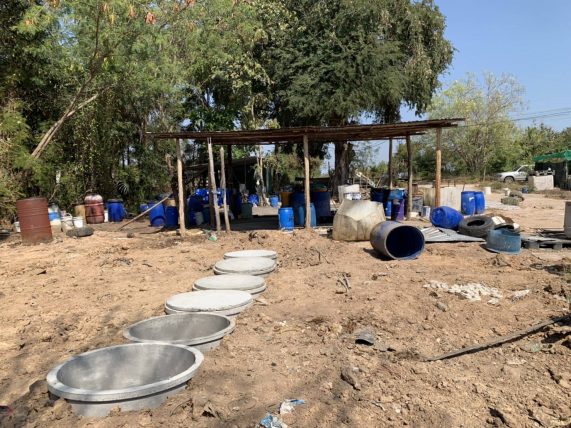
Mr. Athapol Charoenshunsa, Director General of Pollution Control Department (PCD) revealed that PCD had tracked and inspected the chemical tank cleaning sites and PCD found that chemical tank cleaning sites in the Northeast were household-style. In the case of the Consumer Protection Network for Sikhio people, they filed a complaint to investigate the offense of the chemical tank cleaning sites in the area of Nong Ya Khao Sub-district Administrative Organization, Sikhio District, Nakhon Ratchasima Province. The cleaning of chemical tanks in the community can pollute the environment and cause trouble for people in villages and nearby areas because they cannot use water in the Isan Kheaw Canal and the Ban Sub Chumphon Reservoir. However, PCD by Regional Environment Office 11 has been monitoring the case.
Mr. Athapol said that there were 13 operators in the area who have applied for commercial registration at Nong Ya Khao Sub-district Administrative Organization, but they have been not allowed to operate under Public Health Act, B.E.2535 (1992) because the provisions of Nong Ya Khao Sub-district Administrative Organization regarding activities that are hazardous to health, which has been enforced since 1997, do not cover the business of cleaning chemical tanks. Moreover, we found that the household business has chemical tanks for cleaning, mostly 200 liters and 1,000 liters, which are received from Samut Sakhon, Samut Prakan, Bangkok, Lop Buri, and Saraburi. Some businesses use tanks that used to contain hazardous waste or corrosive chemicals to be cleaned for sale. Wastewater from the chemical cleaning is collected in clay pits, plastic tanks, and cement pits.
The water samples in the sewerage pond had impurities in terms of BOD and COD of 6,630 and 26,800 milligrams per liter (mg/L), respectively. Compared with the factory sewage control standards B.E. 2560, according to the Ministry of Industry’s announcement that the BOD and COD standards are not more than 20 and 120 mg/l, respectively, they exceed the standards. Furthermore, we also detected heavy metal contamination, including cadmium, nickel, chromium, and arsenic, in the wastewater and we detected traces of wastewater from tank cleaning sites flowing into the Isan Khiao Canal.
Water quality analysis at 4 points at Isan Khiao Canal, which is a water source nearby the tank cleaning business establishment, found that the water upstream before flowing through the operation area had good water quality (classified as a type 2 surface water source), compared to surface water quality standards according to the Notification No. 8 of the National Environmental Board (1994). Isan-Kheaw Canal near the tank washing sites had water quality that was moderate to very deteriorate. (classified as a type in 3 to 5 surface water sources) Analysis of the heavy metal content of water in the Isan Khiao canal found that the cadmium value was 0.01 mg/l at downstream after flowing through the tank washing area. It exceeds the drinking water standard set by the Department of Health, which is not more than 0.005 mg/l. It could indicate that the water in the Isan Khiao canal without effective treatment to remove residual heavy metals is unsuitable for animal husbandry or consumption.
The water quality in the Ban Sap Chumphon Reservoir, which is the downstream area, was fair (classified as a type 3 surface water source). Although the water quality inspection results in the Ban Sap Chumphon Reservoir found that the number of heavy metals did not exceed the standard values, it was an indication that the Ban Sap Chumphon Reservoir was a water source at risk of heavy metal contamination. It has spread from the chemical tank cleaning sites in the area. Regional Environment Office 11 has informed that Mr. Wichian Chantranothai, Governor of Nakhon Ratchasima Province, is scheduled to visit the area to investigate facts with relevant agencies on February 15, 2022 to integrate cooperation from all sectors in resolving the problem, Mr. Athapol said.
